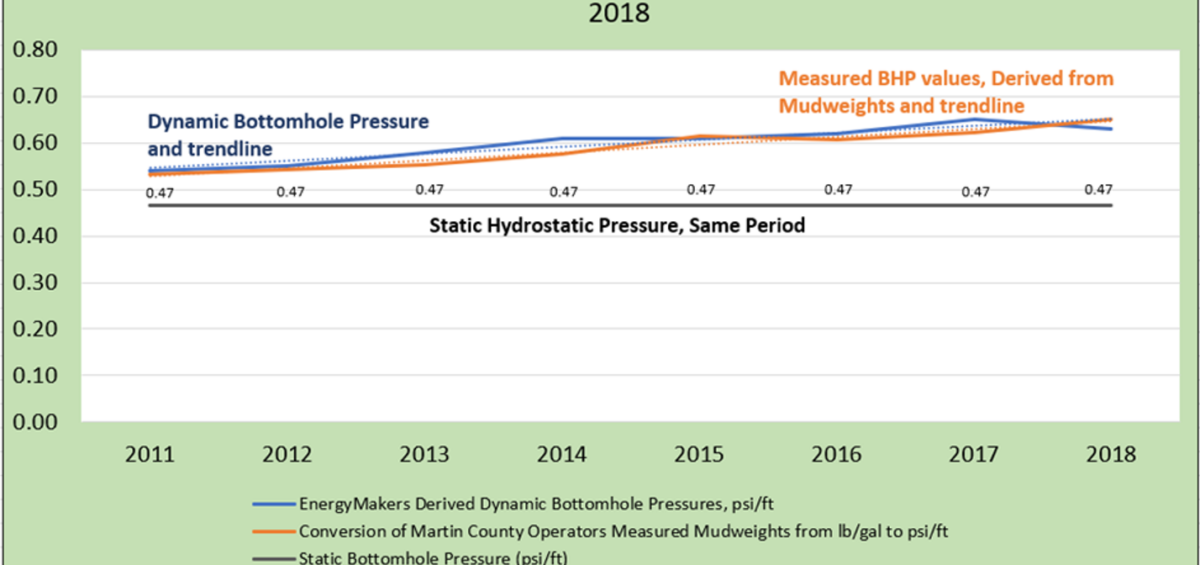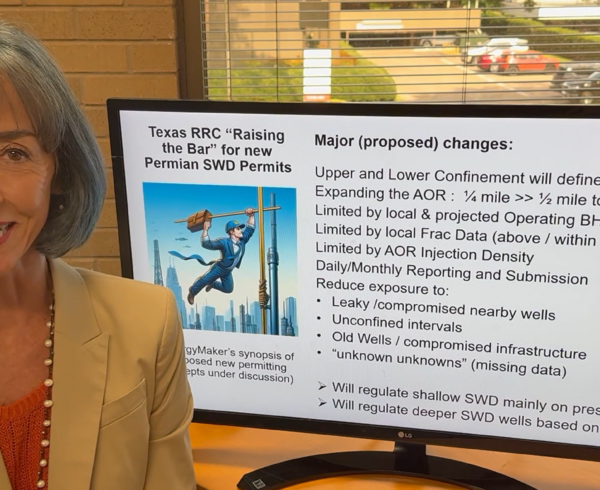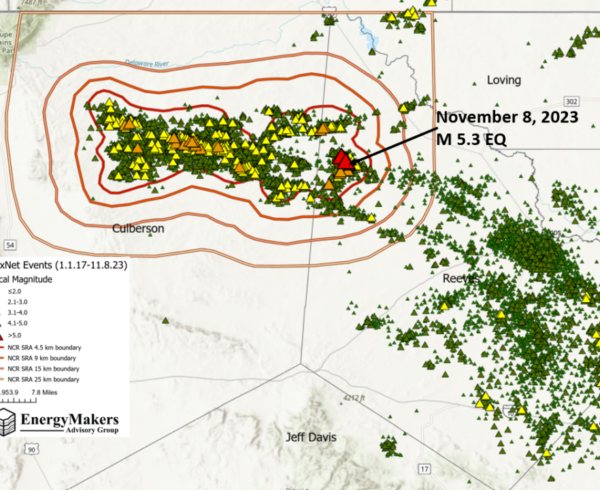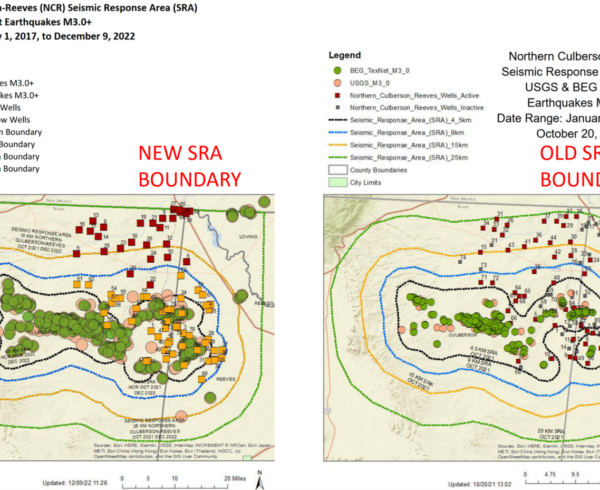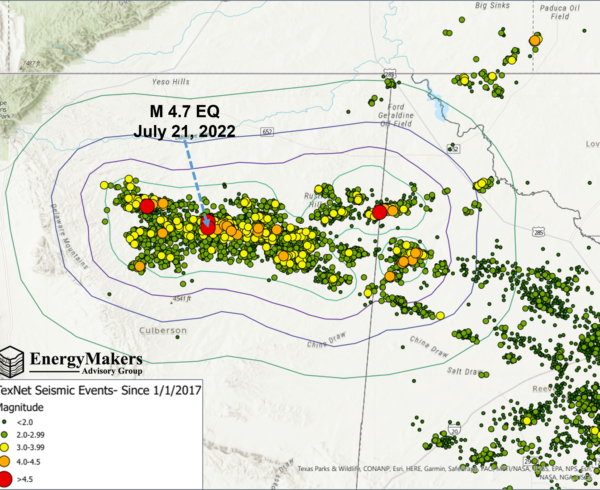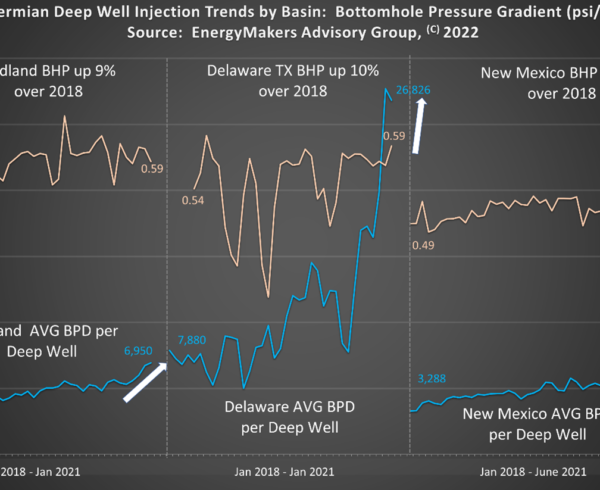We’ve all been waiting to see what comes down from the Texas RRC with regards to induced seismicity and SWD management. Here’s what went out at 10:00 am yesterday:
And here’s our synopsis of the RRC’s guidance (three options) on gathering bottomhole pressure data for all newly permitted or amended SWDs in the Permian Basin:
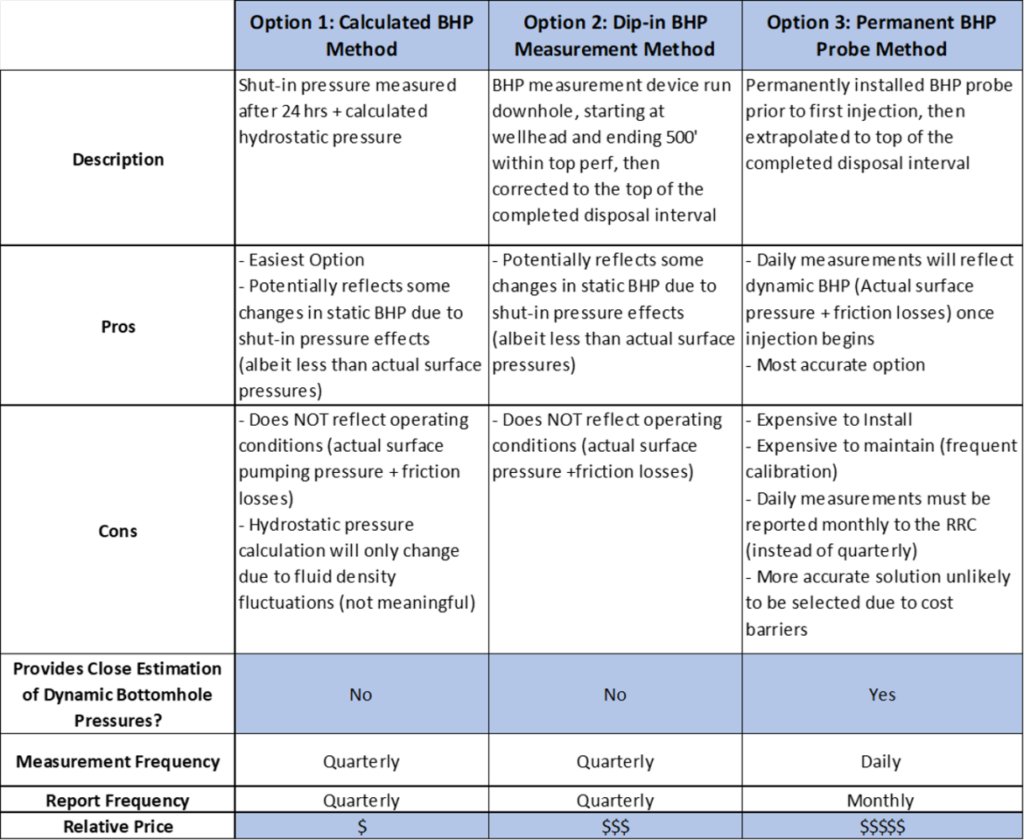
Great news is that industry will be gathering more frequent and timely surface pressure and volumetric data for all (both existing and newly permitted/amended) SWD wells permitted to inject 5,000 BPD or more in the Permian Basin. This is a big improvement over receiving data 12-18 months in arrears for most SWDs.
Because the more rigorous reporting requirement is limited to a subset of underground injection wells (only those SWDs permitted to inject 5,000 BPD or more), those of us in the data and analysis business will not be able to build a full, “up to the moment” understanding of volumes and pressures across the basin reflecting all contributions, which is how we like to do our work at EnergyMakers.
There will be no additional reporting required for EOR wells (not mentioned in the memorandum), which represent 38% of water injected in the Permian in 2021, mostly in shallow and often overpressured formations. The reporting requirement will apply to less than half of SWD wells in operation, but it does address the majority of SWD volumes. In 2021, (the last complete year of SWD reporting) 36% of SWD well counts were injecting more than 5,000 BPD. But, this accounted for approximately 97% of SWD volumes. So altogether, the more timely data will be gathered on roughly 60% of underground injection volumes but will not reflect any contribution (or increased monitoring) for EOR wells, which is “interesting”, given their noteworthy contribution to underground pressure regimes in Texas.
With regards to understanding relationships with Bottomhole Pressures and Seismicity, we’re not sure how much industry will really learn from understanding pressures only under static/shut-in conditions. After all, we are not a static/shut-in industry; generally, we are flowing and operating around the clock.
We’ve been generating calculated BHPs for over 8 years now with good results, showing a very close correlation to measured formation pressures derived from mud weights. This allowed us to chart the slow progression of SWD pressure increases across much of Martin County (recently climbing to the top producing county in the Midland basin). You can see the trend below, and how closely EnergyMakers’ calculated Dynamic bottomhole pressures matched actual measured BHP values from mudweights.
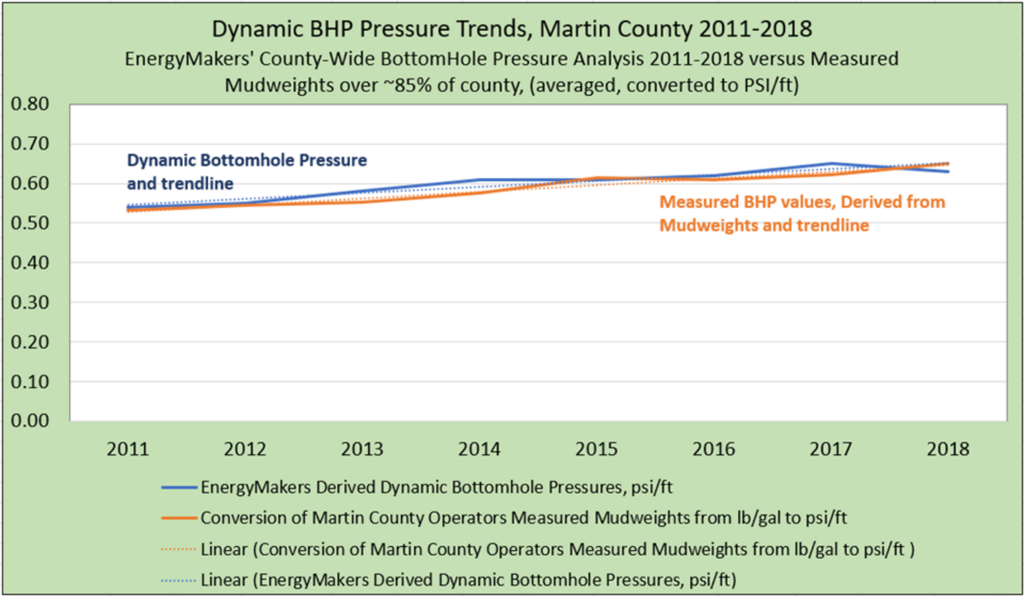
If we had completed the Martin County exercise by calculating only hydrostatic pressures (required in Methods 1 and 2 per the RRC), the grey line in the chart below shows us what we would learn about changes in hydrostatic pressure trends in the Martin County area for the same period. You can see that hydrostatic values are relatively static (unless fluid density dramatically changes), so this calculation or measurement really doesn’t tell us much at all trends or changes.
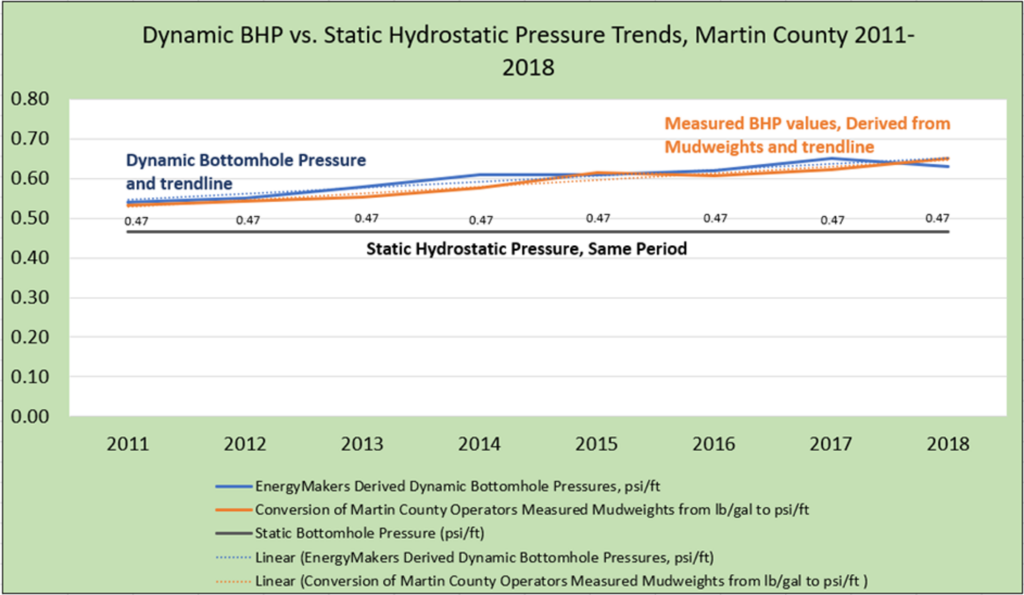
Further, surface pressures taken during static, shut in conditions (required in Methods 1 and 2) will be lower than dynamic real-world operating conditions, and therefore, static surface pressure calculations or measurements will also under-represent, or understate, actual surface pressures during operating conditions.
Our take on the new policies? The new measurements will give some sense of hydrostatic pressures (which only changes due to fluid density fluctuations) and will understate dynamic surface pressures and their role within the system. Overall BHP in dynamic operating conditions will also be under-represented. The periodic static measurements fall short in allowing us to build a real picture of dynamic operating conditions in the Basin, and in particular, understanding true pressure dynamics in operating conditions.
But in the scheme of things, more frequent and timely measurements are a good step forward for industry. We are less sure that periodic reports of static pressures gleaned from a small fraction (the newly permitted well population) will prove to be illuminating to subsurface health, or allow us to learn formation responses to seismic events, or to understand dynamic pressure trends and changes based on volumes injected.
Contact EnergyMakers if you’d like to go beyond static pressures for insights into true operating bottomhole pressures – at a fraction of the cost (and hassle) of a dedicated downhole gauge!


